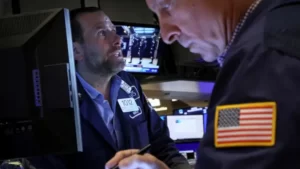Stocks rose Tuesday, as the Dow Jones Industrial Average and S&P 500 bounced back from their lowest closing levels in nearly two years.
The Dow advanced 328 points, or 1.1%. The S&P 500 gained 1.5%, and the Nasdaq Composite rose 2%.
The British pound rebounded slightly after plunging to a record low against the dollar earlier in the week. Sterling traded more than 1% higher at $1.087 per dollar after hitting an all-time low of $1.0382.
Treasury yields also came off their highs, boosting sentiment. The benchmark 10-year yield dipped nearly 5 basis points to 3.823%.
Chicago Federal Reserve President Charles Evans signaled some apprehension about the central bank raising rates too quickly to fight inflation, in contrast to a slew of Fed officials who recently reiterated a tough stance against rising prices.
The move comes after five straight days of losses for stocks, with the S&P 500 closing at its lowest level since 2020. The Dow dropped more than 300 points on Monday, putting it in a bear market after falling more than 20% below its record high. The 30-stock average also posted its lowest closing level since late 2020.
Technical indicators show that the selling has been historic. According to Bespoke Investment Group, the 10-day advance decline line for the S&P 500 has hit a record low, meaning market breadth is at its worst level in at least 32 years.
“We’re getting towards levels where a lot of technicians, a lot of other market prognosticators, indicate is typically the place where the market starts to form a bottom,” said Keith Buchanan, senior portfolio manager at Globalt Investments.
“Participants from my vantage point are starting to kind of pick around the carnage, if you will, from the past couple weeks and try to identify that point in time when the markets have flushed out or are at max pessimism to get more involved,” Buchanan added.
The latest round of selling appears to have several catalysts, including an aggressive Federal Reserve and surging interest rates, which in turn have roiled currency markets. On Monday, the British pound slid to a record low against the dollar, unnerving investors on both sides of the Atlantic.

